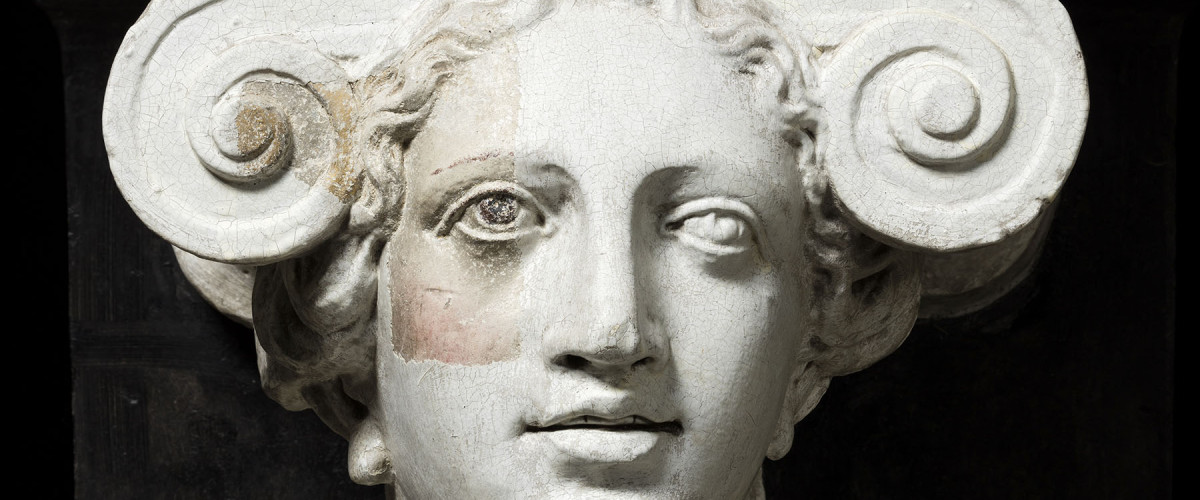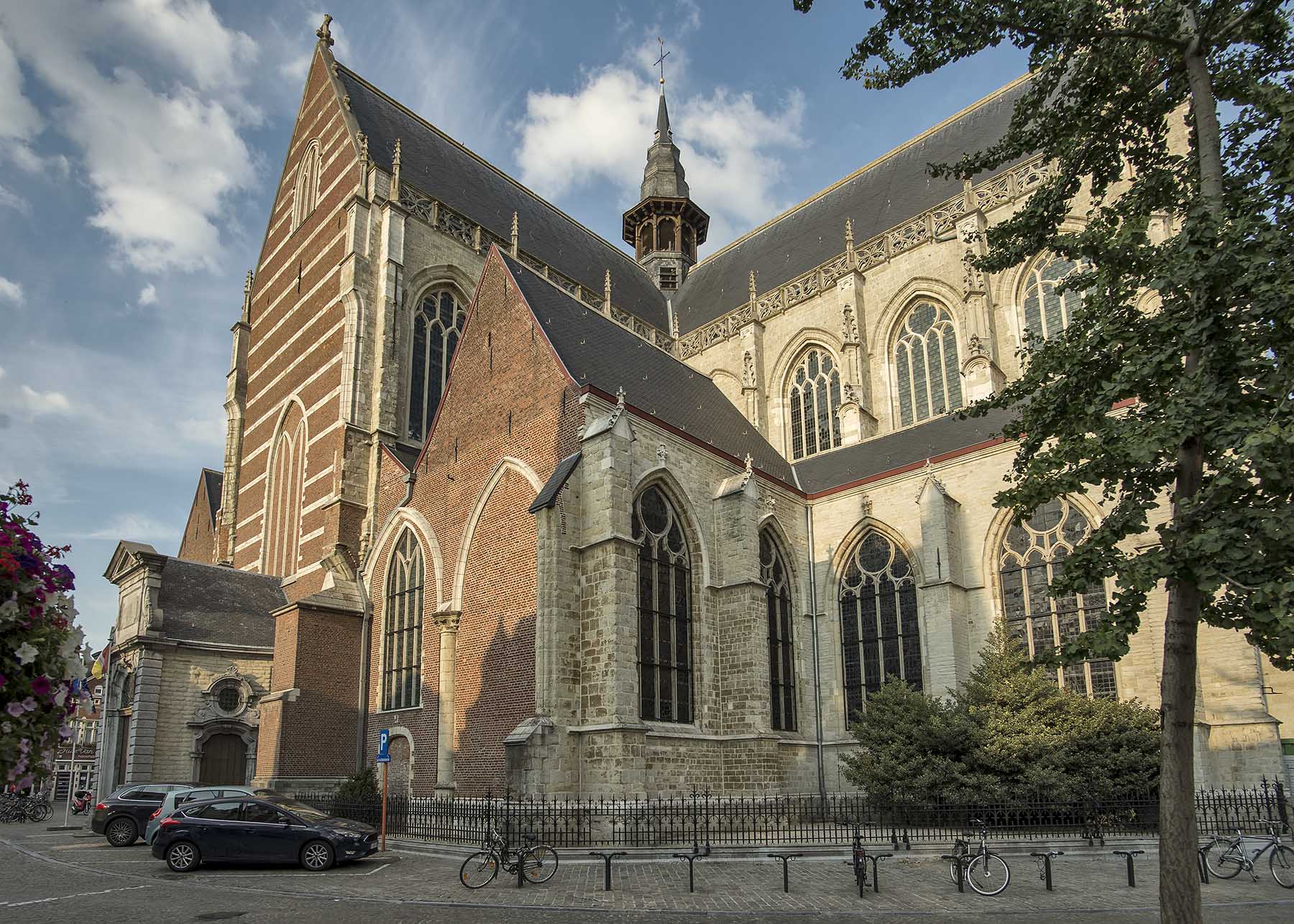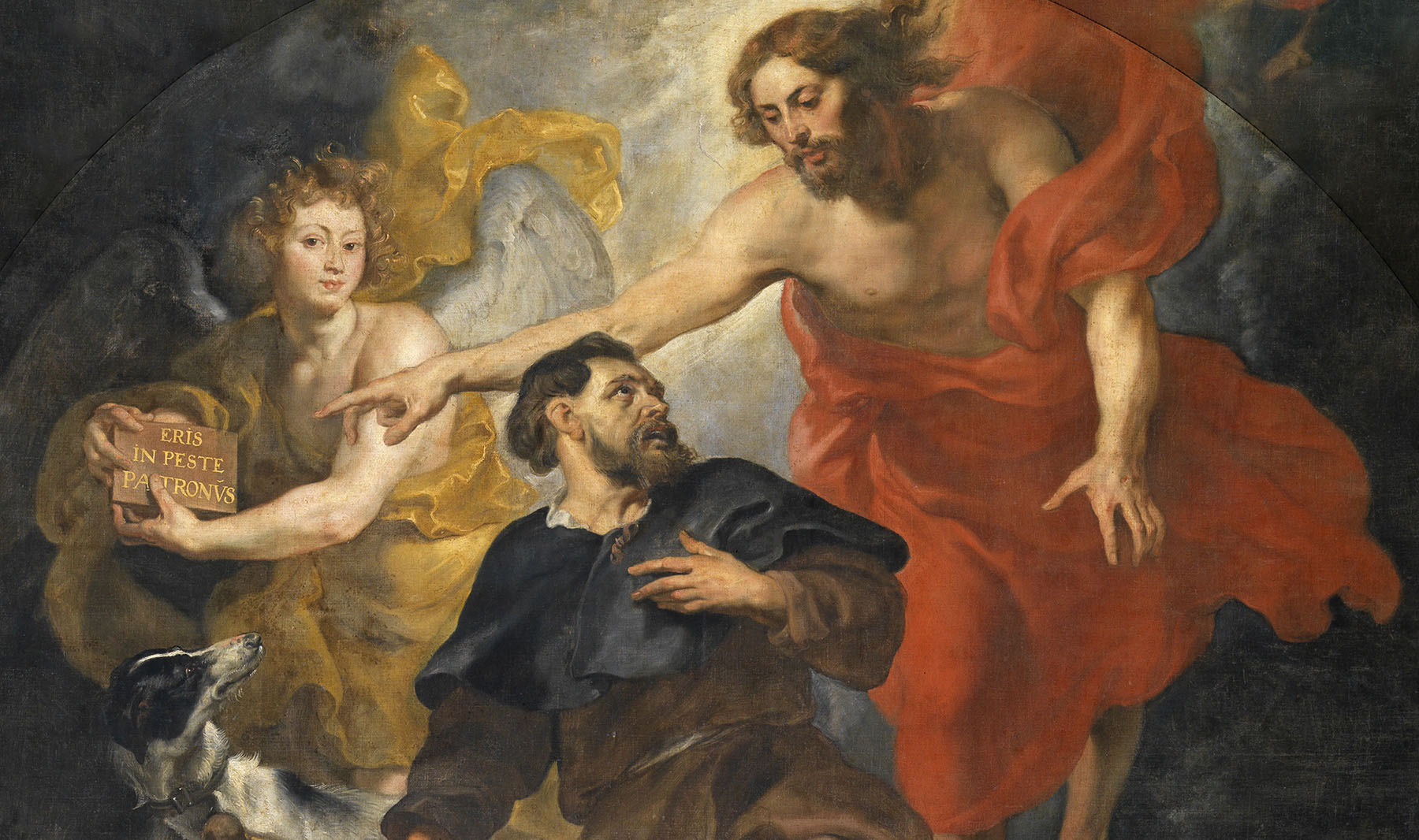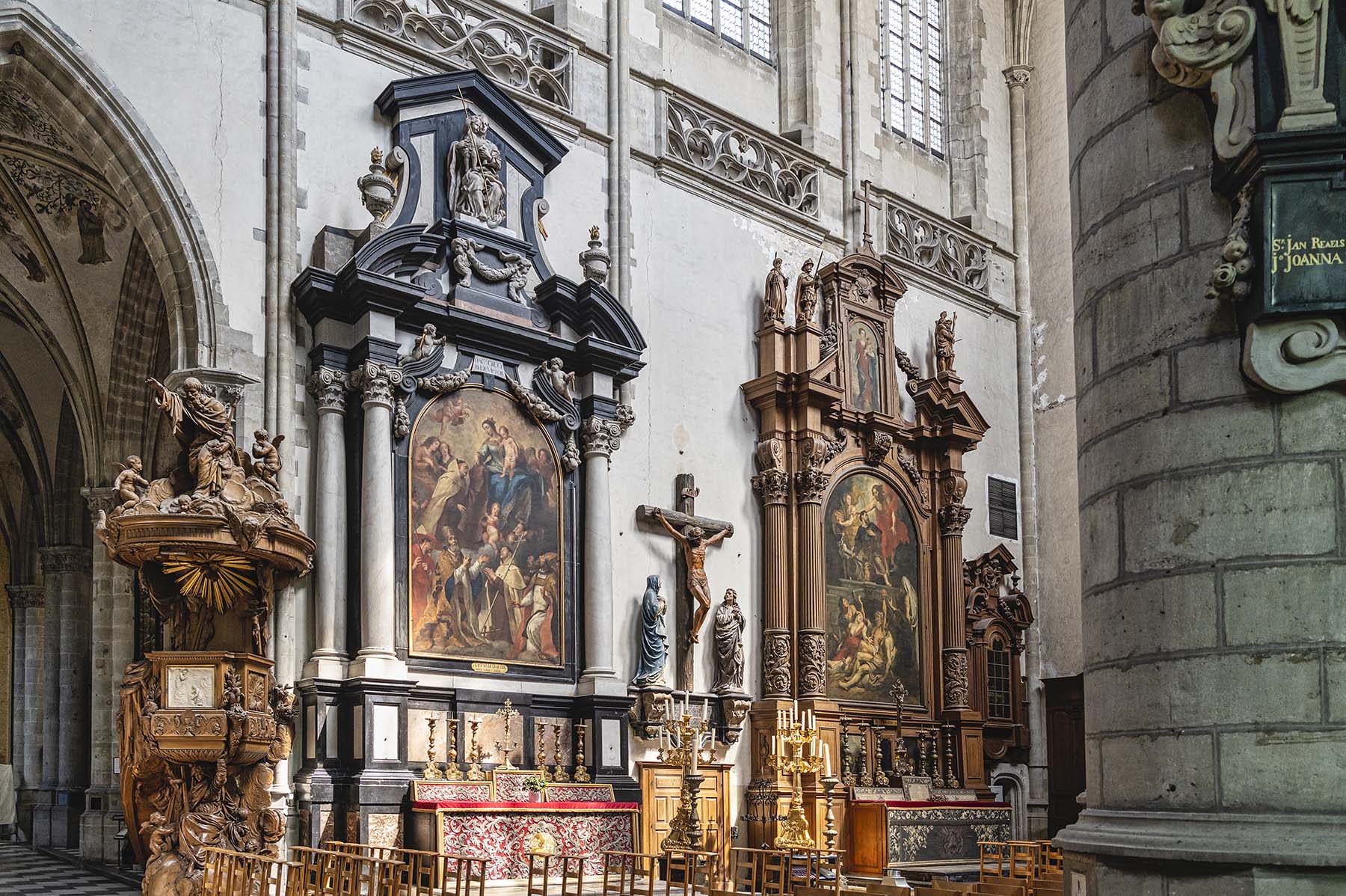Tabernacle tower by Hiëronymus Duquesnoy the Elder (1570-1641)
This 8m-high tabernacle tower was made in 1604 by Hiëronymus Duquesnoy the Elder, world-famous for his little statue Manneken Pis. This tabernacle tower is one of his remaining works that bear witness to his mastery. When the tower was tackled as part of the restoration work at the church, it transpired that the limestone sculptures had at some point been painted in semi-grisaille, a technique whereby several grey tones are combined with touches of colour. The original aspect of the tower must have been much more colourful than thought. In the end, it was decided not to remove all the white paint, but to show in a few places what the sculptures must originally have looked like.
Saint Simon Stock Receiving the Scapular from Our Lady - Gaspar de Crayer (1584-1669)
The altarpiece of Saint Simon Stock Receiving the Scapular from Our Lady was moved to Saint Martin's Church in 1805. Gaspar de Crayer’s work originally hung in the Carmelite church, as Simon Stock was their abbot and according to legend Mary gave him a scapular which gave his order the privilege of wearing their habit after death to protect them in Purgatory. De Crayer’s composition lets us witness the exact moment at which Mary hands over the scapular. Above the altar, we can see a chronogram: hac cruce redemptor or ‘The cross of the Saviour’, which also forms the letters CCVDM or 1805 in Roman numerals, i.e. the year in which the altarpiece was moved.
Practical information
Accessibility
- Easy access for people with disabilities.



